Most sailboats don't need mast gates installed to get the reefing cringle down to the boom.
What you need is proper spacing of the slugs above and below the reef cringle (grommet). In the simplest terms, if the slugs are spaced at least 8" to 10" above and below the reef cringle, you'll be able to reef without removing the sail stop
The same principle applies to the "long
batten" on the P15 mainsail and full length battens. If you put slugs
about 8" to 10"above and below the batten, it will hang nicely
at the bottom of the flake so you can tie the mainsail neatly.
First of all, put a sail stop (or something) below the boom to keep it from dropping all the way to the cabin top when you slack the main halyard for reefing. That solves one problem, pretty simply, for under $10.
The cut out on most Potter masts (not all) is 2.5 inches high. The bottom of the cut out is about 3 or 4 inches above the gooseneck.
So, your sailstop is probably less than 8" (or so) above the gooseneck. If that's correct, then you can get the reef cringle down to the gooseneck if the space between the slugs is at least 16" apart and the reef grommet is in the middle!
On the Potter P15 sails, the slugs are spaced approximately every 25". On the P19 mainsail, the slugs should be a little further apart, maybe about 27".
The reef cringle should be about half way between the slug above and the slug below it. So that means theres about 12-14" of cloth above and below the reef cringle without a slug. 12" of "free luff" on either side of the reef cringle is more than enough to easily reach the reef horn on a Potter, without removing the sail stop.
In fact, if you've got at least 8" (or maybe 9") above and below the reef cringle, you CAN get the grommet down near the gooseneck without loosening the sail slug or removing any slugs from the track .
Here's another tip: It's hard to get the cringle on the hook, so make things easy on yourself by putting a piece of webbing or line with a SS ring through the cringle. Put the ring on the hook, rather than wrestling with tryng to put the reef cringle (grommet in the sail) directly onto the hook
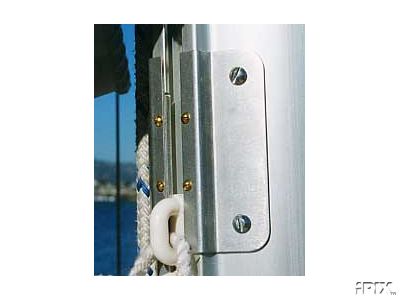
CATALINA 30 MAST SAILGATE is a device Designed by George Benson Design Specifically for Catalina 30’s that will allow the C-30 sailor to close the gate on his sail track, do away with the sail stop and jacklines and flake his mainsail on the boom. It is made from 5052 aluminum and clear anodized. It comes in a kit including port and starboard gates, mounting screws and instructions. Simple installation.
Available only for the Catalina 30 mast extrusion. Not available for any masts other than the Catalina 30 (not C22s nor C27s).
For further information contact gbdesign22@hotmail.com
(Reproduced with permission)
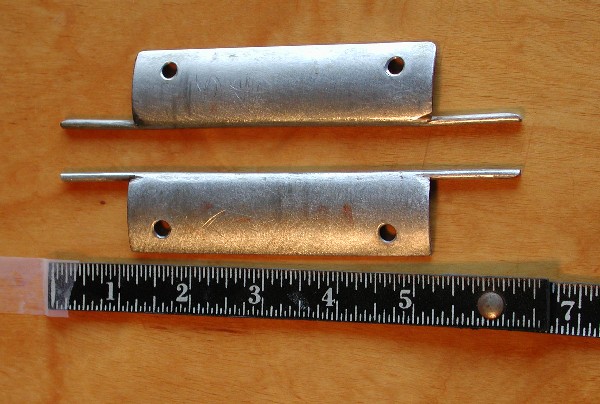
Mast Gates designed for a Catalina 22 mast extrusion. I don't know where I found this picture, so I'm afraid I can't give proper credit.

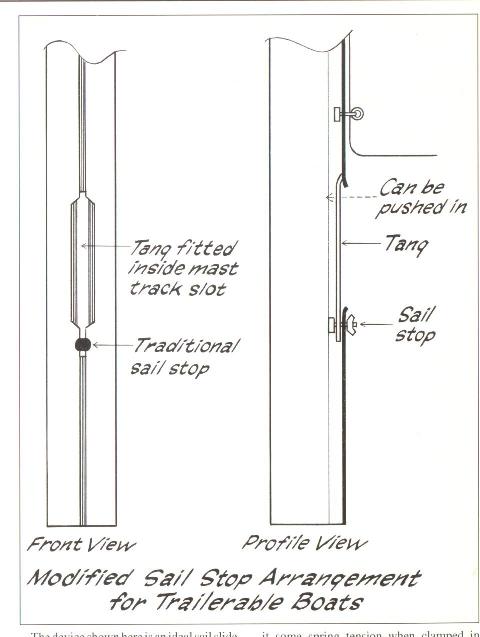
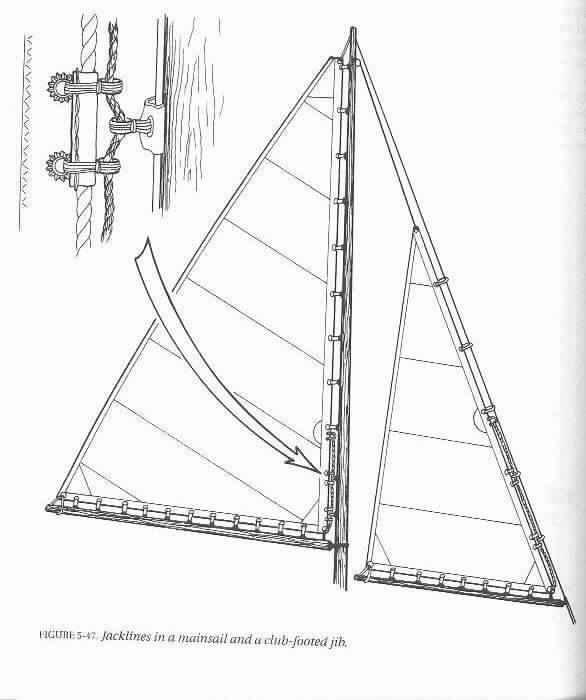
Mainsail jacklines permit the luff of the sal to fall away from the slugs in the track when you reef it, thus permitting the reef tack to be pulled down to the gooseneck without loosening a sail stop.
Jacklines are a good solution for the trailerable sailboat. You don't have to mess with removing the screws to a mastgate every time you bend on the mainsail
Just be careful, please, when you reeve the reef lines. With all those extra lines, you can end up with macramee -- if you get the jacklines and reef lines tangled, you'll have difficulty hoisting the mainsail.
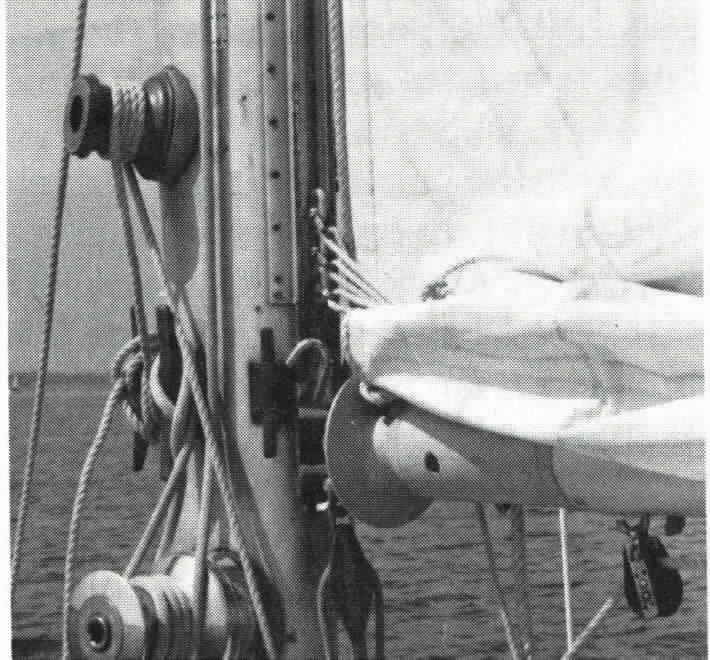

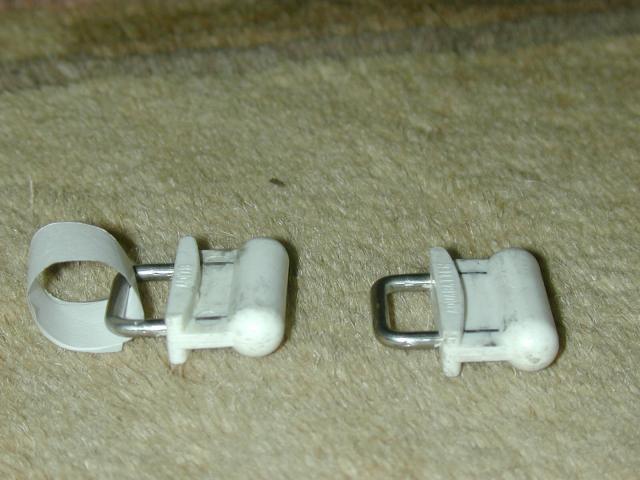
The jackline must slide freely through the sail slugs, or else it will bind. It must pass vertically through the slide bails without deflection. Here's one way to do it.
Use a double loop of appropriately sized webbing, secured in two places with stitching. Don't use paper like in this picture -- it was just an easy way to illustrate the concept.
